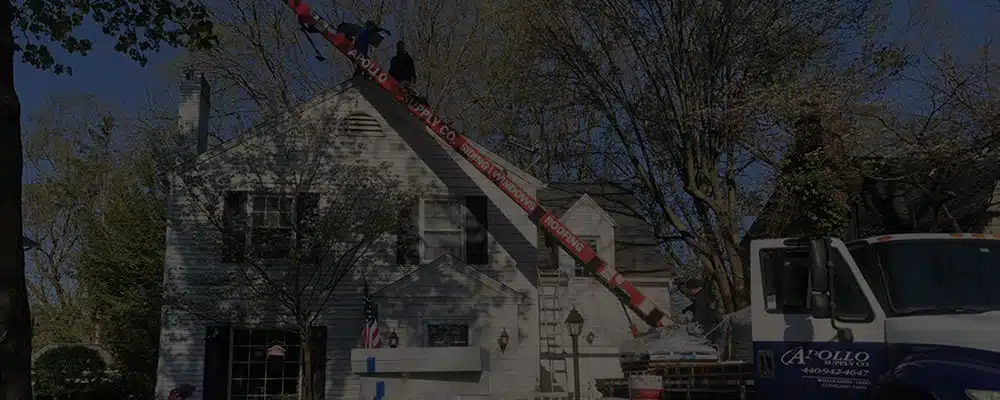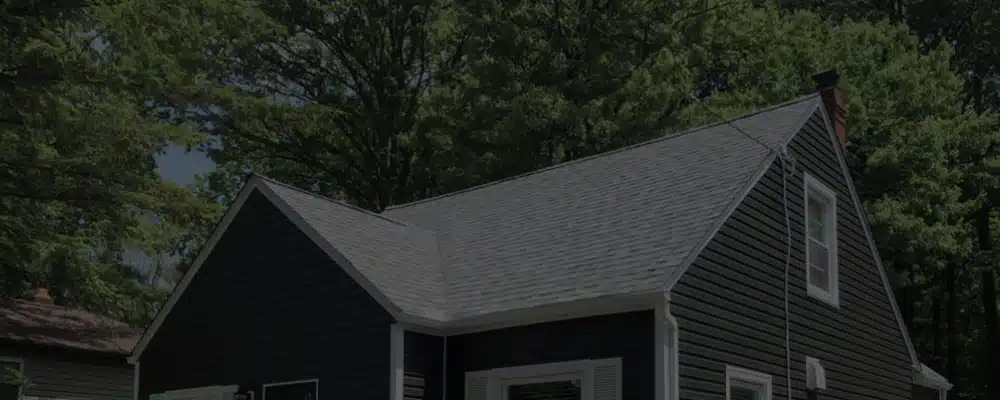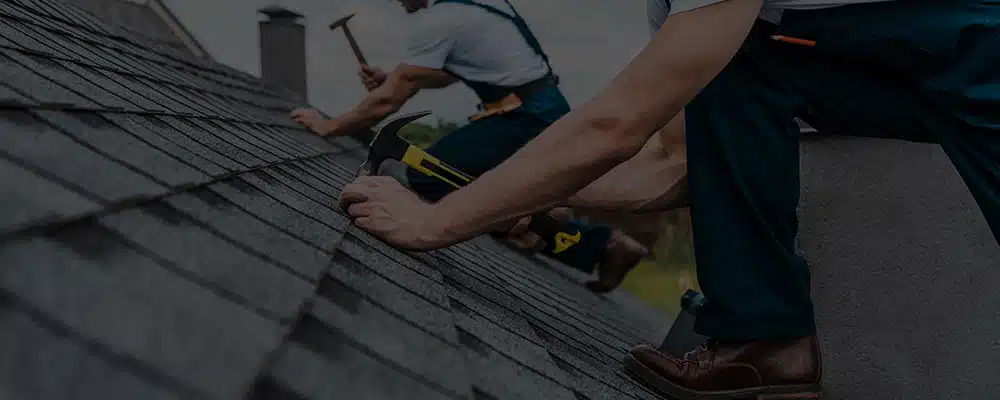Some storm damages to roofs are obvious while some aren’t. So, if your suspect that your roof has been damaged by wind, hail, or a storm, check it for damage using this guide or you can also hire a roofing contractor to inspect your roof. This is important because ignoring inspections can lead to bigger problems later and, in a worst-case scenario, a damaged roof poses a threat to your property and your family.
When inspecting your roof, take pictures of the damaged parts to document the storm damage. Let’s start!
Inspect Exposed Objects Of The House On The Ground First
Before checking your roof, you should check the objects on the ground level. This will also give you an idea of whether your roof will be damaged or not and what kind of damage it could be.
Wind, hail, tornadoes, and other extreme weather elements damage anything that is part of the exterior of the house. So, check dents in downspouts, dents to the garage door, dings, in window screens, dings in shutters, dents on your air conditioner or any other appliance, and other objects.
Check Out The Gutters
Gutters can hint at least two types of damage to your roof. The first is the damage to the gutters themselves. Check for dents on the gutters. If there are dents or any other damage, it can stop water from draining from the roof. The water will stand on some parts of the roof and can cause damage. Moreover, if those parts of the roof are damaged as well by the storm, water will find it much easier to reach the decking and cause problems.
The second type of damage you can detect from the gutters is damage to the shingles. How? Shingles are covered with granules that are layered as a protective covering for the shingles and make the shingles durable.
With high winds and storms, shingles can lose the grains which makes them vulnerable to damage. If you check the gutters of your roof and find sitting black, sand-like granules on them, this means the shingles are losing their durability.
Carefully Inspect The Shingles
Shingles are among the first line of defense when it comes to roofs so they can sustain damage in various ways which you need to identify.
Missing Shingles
The easiest roof damage to spot is missing shingles because they can be seen from a distance as well. Usually, this type of shingle damage happens during high winds that can tear away shingles with its force.
Missing shingles is a serious roof damage because they leave the parts that were under the shingles unprotected and they can now be easily damaged by water. Moreover, if another storm hits before the homeowner installs the shingles, the roof will already be weak due to the missing shingles and might sustain more damage.
Curled Shingles
Shingles can curl or lift due to high wind or due to extreme changes in temperature. Shingles are installed to act as a seal for each other. When some curl or lift, they allow enough space beneath them for water to infiltrate the roof. This happens much more during wind-driven rain. So, look for curled or lifted shingles. The roof won’t appear uniform due to them.
Pockmarks Or Dents
The damage caused by hail is pockmarks or cracks on shingles. Check your shingles for small holes as if someone drilled a bit into the shingles with a drill machine. These pockmarks allow access for water to enter the roof and also speed up the granules-loss of the shingles.
Standing Water
If you see standing water on your roof after a heavy rainfall or a rainstorm, it denotes that the gutters are dented or clogged with debris. Dented gutters may restrict water removal from the roof. Some water will flow to the lower parts of the roof and cause damage there.
In the same way, if the gutters are clogged with debris or leaves, water won’t have anywhere to go and will stand on the roof.
It’s possible that gutters become dented or clogged with debris in the same storm and you can’t prevent this. However, sometimes, gutters are clogged with debris naturally and regular cleaning of gutters can prevent this problem.
Debris On The Roof
This ties in with the last point. Debris doesn’t only block the gutters, but it can also cause damage to the roof directly in the form of broken tree limbs and other heavy objects. If you find debris on your roof, check the shingles for cracks and damages.
Roof Flashing And Roof Vents Damage
Roof flashing is the metal sheet that covers the two parts of the roof and areas like the edges of the roof and the chimneys. Moreover, roof vents are for attic ventilation and are covered with metal sheets where shingles can’t be installed.
As these are the parts where two different materials are installed with each other, they are prone to damage by hail and storms. Look for dents on the metal parts of your roof. Some dents can lead to holes too. Moreover, dented roof flashing or vents hint that the storm might have damaged other parts of your roof as well.
Apart from roof flashing, check other features of the roof as well like the chimneys and skylights. Check for torn sealing, loose screws, or any other visible damage.
Peeling Paint Near Roofline
Peeling paint usually means poor attic ventilation. It occurs when humidity keeps building up in the roof and affects the paint and other parts of the roof. When a storm hits, it magnifies the problems that your roof is already having. So, if the paint near the roofline is blistering, check other parts of the roof as well.
Attic Inspection
Even if you don’t find any damage on the roof, there may be hidden damage to your roof through leaks that you can’t easily identify. Therefore, check out the attic as well during your post-storm roof inspection.
Look for signs of moisture damage or leaks. Sometimes, the process will be as simple as entering the attic where you will find water dropping from the ceiling. However, other times, it can be difficult to detect a problem. If you notice humid air in the attic, there is probably a leak somewhere.
Furthermore, check the rafters in the attic. As they are made of wood, they may become warped with excess humidity. As they support the roof, wet or warped rafters are a threat to the stability of your roof and also show you that at least one part of your roof is leaking. So, get it repaired as soon as possible.
Additionally, check out the ceiling of your house as well and consider repairs if you find water stains on walls or ceilings. You should not take stains on ceilings and walls lightly because stains appear much after the actual leak.
Conclusion
Although inspecting your roof yourself sounds like a good idea, if the probability of roof damage is higher, it’s better to hire a roofer for the inspection. To inspect it yourself, try to check it from the ground level or stand on a ladder to get a closer look.
Many roofers offer free roof inspections. When they find any issues and repairs to be done, they provide a quote for the repairs. Therefore, look for roofing companies Cuyahoga Falls that are known for high-quality service and get your roof inspected and repaired reliably.




